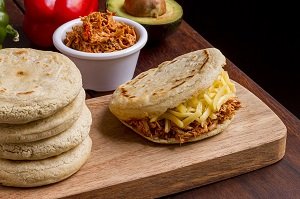One of the strongest arguments in favor of an incentive trip to South America is to have the chance at sampling is fascinating specialty dishes high in colors and flavors. The Latin cuisine has numerous influences, due to the ethnic fusion of the continent. The most characteristic and representative influences are Native American, but also African, Spanish, Italian, Portuguese, and South Asian.
For such richness, let the truth be told: Latin America is a true paradise for foodie travelers. Over the past few years, the culinary scene here has burst onto the global stage making it the hottest and most exciting food culture on the planet. Taking traditional ingredients and using modern techniques, they have managed to introduce ancient dishes to the modern palate, creating tastes and textures that are as unique as they are delicious. Food in Latin America is a passion and with an abundance of fresh local ingredients, farm-to-table experiences are a way of life and nowhere are culture, faith and food more intrinsically linked.
One of the largest trends the incentive travel industry has witnessed over the past few years is the skyrocketing interest in creating unique, unforgettable experiences on an incentive trip. Few things leave more lasting memories than a gastronomic experience. A truly immersive itinerary in Latin America cannot leave out its flavors!
Some essential dishes for this knife and fork tour:
1. Ceviche in Peru


Ceviche is one of the most popular Latin American dishes that you can find across the coastal areas of South and Central America. Each country has its own take on the raw fish dish, but none do it quite like Peru, where this dish got its start. Peruvian ceviche is usually made of fresh, raw seafood (usually a white fish) that is cured in citrus juice. The fish is usually mixed with chili for kick and garnished with onion and coriander or cilantro.
Booze tip: Pisco Sour is the national cocktail of Peru, so popular with Peruvians that it has it’s very own annual National Pisco Sour Day to celebrate. Made up of the local spirit, Pisco (a grape brandy), egg white, lemon juice and sugar syrup, Pisco Sours can be ordered across Peru and also in Chile.
2. Empanadas in Argentina


A pocket of pastry filled with tasty savory fillings – what’s not to love about the humble empanada? The crunchy half-moon pastry is common in Argentina where you can find them filled with cheese, meat or vegetables. Each region has its own signature flavor and this South American street food snack makes for a great afternoon pick-up.
3. Fusion Cuisine in Northern Brazil
There is a lot to love about northern Brazil – the golden-sand tropical beaches are a good place to start. With an abundance of tropical fruits and excellent Atlantic Ocean seafood, many hotels here offer ultra-fresh, ultra-healthy ‘clean-eating’ menus that allow guests to feel a bodily and spiritual nourishment during a break in the sun.
This part of Brazil, especially the State of Bahia and its colorful capital, Salvador, are characterized by an ethnic and cultural melting pot that has given rise to a rich cuisine combining elements of Amerindian, African and Asian flavors; the two latter influences being brought to these shores on the ships of Portuguese colonists. Rich coconut curries, spicy seafood broths and delicious fruity desserts are all common here.
Must-try dishes include the moqueca, a seafood stew with curry spices and rich coconut sauces; acarajé, crispy deep-fried bean-paste fritters stuffed with chili shrimp; and vatapá, another popular dish made of a spicy prawn paste, palm oils, peanuts and coconut milk served with white rice. To understand Brazil’s mixed cultural heritage, there’s no better way than tucking into these typical dishes after a day out in Salvador touring local markets and learning to cook with a local Bahian chef.
Booze tip! Made with cachaça alcohol, sugar, lime and lots of mint, the Caipirinha is Brazil’s most famous and refreshing drink. Picture yourself sitting in the comfort of your hotel or bar, overlooking a Copacabana Beach and sipping an ice cold Caipirinha…bliss!
Extra tip! Açai bowls in Brazil


On a hot humid day in Brazil, nothing is better than an icy açai bowl. This popular and healthy Latin American dish combines rich, deep-purple açaí berry pulp with banana and fruits. The frozen mixture tastes like dark berries mixed with cacao. The bowls are topped usually with some sliced fruit and sometimes a sprinkle of granola, shaved coconut, seeds and nuts. Low in calories and highly refreshing, it’s the ultimate summer seaside treat.
4. Arepas in Colombia


This Colombia’s quintessential street food snack can be found on almost every street corner of this vast and beautiful country. In its simplest form, the arepa is a thick, round unleavened flatbread made from ground maize flour, grilled over hot coals and slathered with a generous helping of butter which melts, coating your hands with a rich, glossy oil. Cheese is a popular addition, but there are endless regional variations available for every time of day and night! Try the arepa con huevo in the country’s capital Bogotá. Quite simply an irresistible combination of a deep-fried arepa encasing a perfectly cooked, runny egg – pure breakfast heaven with a pinch of salt or adorned with a dollop of spicy aji picante!
5. Salteñas in Bolivia
Salteñas are a Bolivian comfort food with an appeal that traverses the entire country. Perhaps one of their main draws is the unique combination of flavors: baked sweet pastry encasing a spicy aji amarillo (yellow pepper) broth and savory filling typically prepared with beef or chicken, potatoes, vegetables, sliced hard-boiled egg and an olive or a handful of raisins. The shape of this hand-held pie resembles more of the Cornish pasty than that of the empanadas that dot the rest of the South American continent, with their oblong, upright stance and twisted top. Eating them without spilling any of the piping hot juice is somewhat of an art form, so beware!
6. Dulce de leche all over South America


Uruguay, Argentina, Chile, Colombia and Peru are just some of the countries in Latin America that dispute the origins of this delicacy, although only Uruguay and Argentina call it by the name ‘dulce de leche’. It is made from a process of caramelizing milk, and is traditionally made with milk, sugar and vanilla. Dulce de leche is the most popular sweet treat in Latin America and people often have it for breakfast, most commonly on toast, but also on pancakes or waffles.
**
Food is such an integral part of a country’s history and culture, as well as being one of the most enjoyable experiences of travel. Digging into an age-old recipe can uncover cultural aspects of a nation’s history and traditions. Approaching travels through food allows our group to be more engaged with the local people and more immersed in their culture.
GT DMC Brazil celebrate Latin cuisine for its richness – both in culture and flavors. To us, food is more than just fuel, it represents an identity of place that ties us close as one. What about making your next incentive travel a real Brazilian and Latin America food experiences?
Talk to out incentive travel specialists at www.gotogether.com.br

Comentários